
The Red Arrows, officially known as the Royal Air Force Aerobatic Team, is the aerobatics display team of the Royal Air Force (RAF) based at RAF Waddington. The team was formed in late 1964 as an all-Royal Air Force team, replacing a number of unofficial teams that had been sponsored by RAF commands.
On 7 January 1948, 25-year-old Captain Thomas F. Mantell, a Kentucky Air National Guard pilot, died when he crashed his P-51 Mustang fighter plane near Franklin, Kentucky, United States, after being sent in pursuit of an unidentified flying object (UFO). Mantell pursued the object in a steep climb and disregarded suggestions to level his altitude. At high altitude, he blacked out from a lack of oxygen; his plane went into a downward spiral and crashed. The incident was among the most publicized of early UFO reports. Later investigation by the United States Air Force's Project Blue Book indicated that Mantell died chasing a Skyhook balloon, which, in 1948, was a top-secret project that he would not have known about.

The Gloster Aircraft Company was a British aircraft manufacturer from 1917 to 1963.
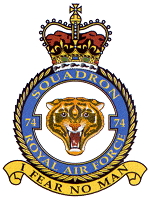
No. 74 Squadron, also known as 'Tiger Squadron' from its tiger-head motif, was a squadron of the Royal Air Force (RAF). It operated fighter aircraft from 1917 to the 1990s, and then trainer aircraft until its disbandment in 2000. It was the Royal Air Force's member of the NATO Tiger Association from 1961 until the squadron's disbandment, it has since been replaced by No. 230 Squadron.

Royal Air Force Bentwaters or more simply RAF Bentwaters, now known as Bentwaters Parks, is a former Royal Air Force station about 80 miles (130 km) northeast of London and 10 miles (16 km) east-northeast of Ipswich, near Woodbridge, Suffolk in England. Its name was taken from two cottages that had stood on the site of the main runway during its construction in 1943.
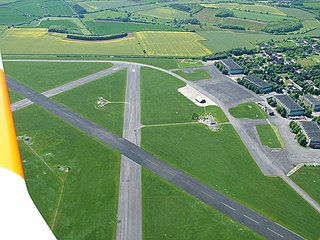
Royal Air Force Little Rissington or more simply RAF Little Rissington is a Royal Air Force satellite station in Gloucestershire, England. It was once home to the Central Flying School, the Vintage Pair and the Red Arrows.

Upper Rissington is a village and civil parish in the Cotswold district of Gloucestershire, England. It is located about two-and-a-half miles east of Bourton-on-the-Water and is one of the highest villages in the Cotswolds at an elevation of 275 m.
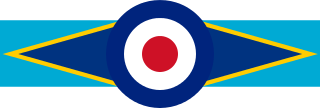
The name No. 68 Squadron has been used for two quite different units, only one of which was strictly a unit of the Royal Air Force. "No. 68 Squadron RFC" was for a time the official British military designation for No. 2 Squadron Australian Flying Corps.
The Chiles-Whitted UFO encounter occurred at approximately 2:45 AM on July 24, 1948, in the skies near Montgomery, Alabama, United States. Two commercial pilots, Clarence S. Chiles and John B. Whitted, claimed to have observed a "glowing object" pass by their plane before it appeared to pull up into a cloud and travel out of sight.
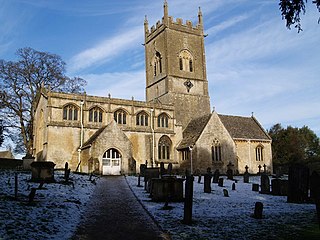
Withington is a Cotswold village and civil parish in Gloucestershire, England, about 7 miles (11 km) southeast of Cheltenham and 8 miles (13 km) north of Cirencester. The River Coln runs through the village. The parish includes the hamlets of Hilcot, Foxcote and Cassey Compton. The parish population taken at the 2011 census was 532.
The Chicago O'Hare UFO sighting occurred on November 7, 2006, around 4:15 p.m. when 12 United Airlines employees and a few witnesses outside O'Hare International Airport reported a sudden UFO sighting. The Federal Aviation Administration refused to investigate the matter because this unidentified flying object (UFO) was not seen on radar, instead calling it a "weather phenomenon".
This is a list of notable alleged sightings of unidentified flying objects (UFOs) in the United Kingdom. Many more sightings have become known since the gradual release, between 2008 and 2013, of the Ministry of Defence's UFO sighting reports by the National Archives. In recent years, there have been many sightings of groups of slowly moving lights in the night sky, which can be easily explained as Chinese lanterns. Undertaken between 1997 and 2000, Project Condign concluded that all the investigated sightings of unidentified aerial phenomena in the UK could be attributed to misidentified but explicable objects, or poorly understood natural phenomena. London is the city with the most UFO sightings in the UK, followed by Manchester and Birmingham.

From July 12 to 29, 1952, a series of unidentified flying object (UFO) sightings were reported in Washington, D.C., and later became known as the Washington flap, the Washington National Airport Sightings, or the Invasion of Washington. The most publicized sightings took place on consecutive weekends, July 19–20 and July 26–27. UFO historian Curtis Peebles called the incident "the climax of the 1952 (UFO) flap"—"Never before or after did Project Blue Book and the Air Force undergo such a tidal wave of (UFO) reports." this went on to become one of the most known UFO sightings ever.
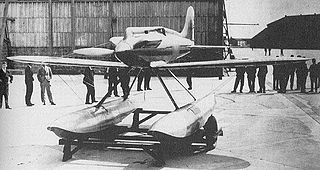
The RAF High Speed Flight, sometimes known as 'The Flight' , was a small flight of the Royal Air Force (RAF) formed for the purpose of competing in the Schneider Trophy contest for racing seaplanes during the 1920s. The flight was together only until the trophy was won outright, after which it was disbanded.
The Lakenheath-Bentwaters Incident was a series of radar and visual contacts with unidentified flying objects over airbases in eastern England on the night of 13–14 August 1956, involving personnel from the Royal Air Force (RAF) and the United States Air Force (USAF). The incident has since gained some prominence in the literature of ufology and the popular media.

No. 87 Squadron RAF was an aircraft squadron of the Royal Air Force during the First World War and Second World War.

On June 24, 1947, private pilot Kenneth Arnold claimed that he saw a string of nine, shiny unidentified flying objects flying past Mount Rainier at speeds that he estimated to be at least 1,200 miles per hour (1,900 km/h).

No. 1417 Flight RAF was an independent flight of the Royal Air Force which existed between 1941 and 1993 at various times in a variety of roles. This Flight had probably the most interesting incarnations of all the independent aircraft flights of the Royal Air Force, introducing new technologies and operating complex fast jet aircraft in challenging and austere conditions, from the Arabian Peninsula to Central America.
Royal Air Force Moreton Valence or more simply RAF Moreton Valence is a former Royal Air Force installation located 9 kilometres (5.6 mi) southwest of Gloucester, Gloucestershire and 24 kilometres (15 mi) northwest of Cirencester, Gloucestershire, England.
Neill Michael Daunt OBE was a British test pilot; the first person to fly the Gloster Meteor in March 1943, Britain's first production jet aircraft. He was the second person to fly the Gloster E.28/39 "Pioneer" in November 1942. He had many severe accidents that he was lucky to survive, including one for which he had no recollection.















